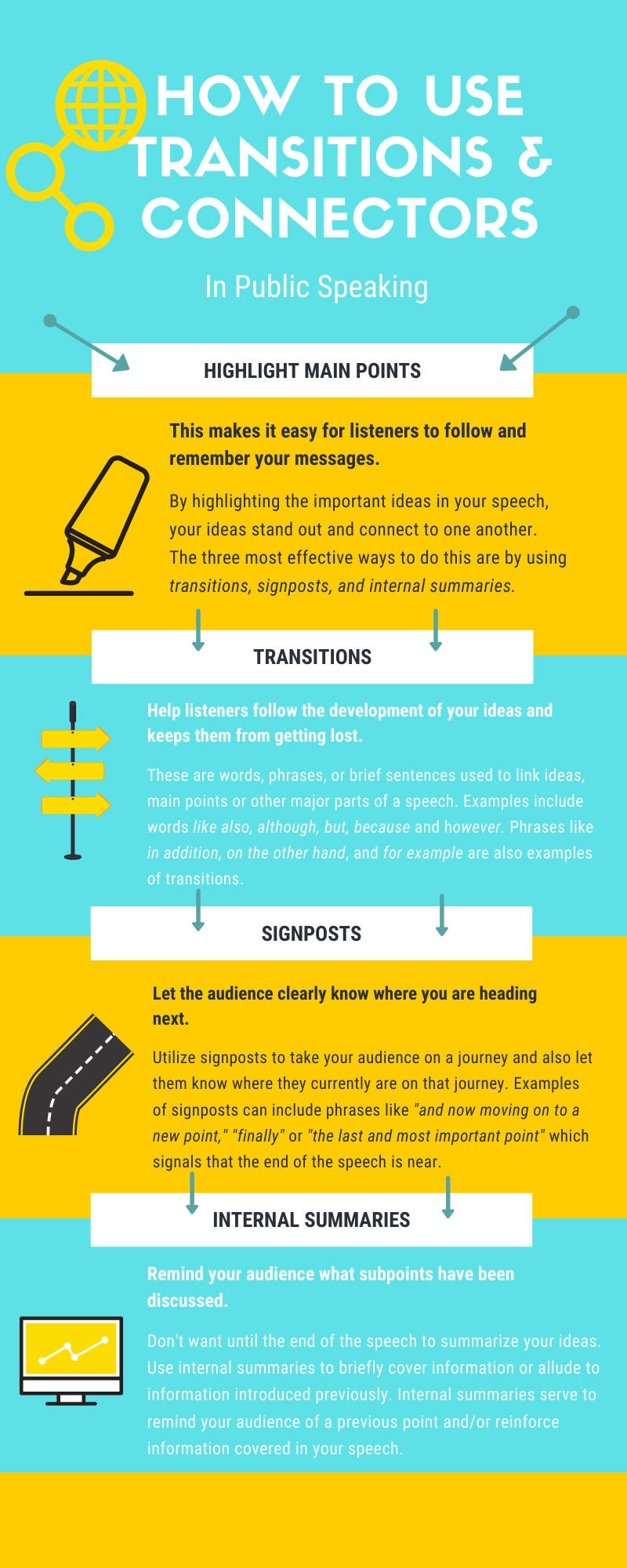HOW TO USE TRANSITIONS & CONNECTORS
IN PUBLIC SPEAKING
HIGHLIGHT MAIN POINTS
This makes it easy for listeners to follow and remember your messages. By highlighting the important ideas in your speech, your ideas stand out and connect to one another. The three most effective ways to do this are by using transitions, signposts, and internal summaries.
TRANSITIONS
Help listeners with the development of your ideas and keeps them from getting lost. These are words, phrases, or brief sentences used to link ideas, main points or other major parts of a speech. Examples include words like also, although, but, because and however. Phrases like in addition, on the other hand, and for example are also examples of transitions.
SIGNPOSTS
Let the audience clearly know where you are heading next. Utilize signposts to take your audience on a journey and also let them know where they currently are on that journey. Examples of signposts can include phrases like “and now moving on to a new point,” “finally” or “the last and most important point” which signals that the end of the speech is near.
INTERNAL SUMMARIES
Remind your audience what sub-points have been discussed. Don’t want until the end of the speech to summarize your ideas. Use internal summaries to briefly cover information or allude to information introduced previously. Internal summaries serve to remind your audience of a previous point and/or reinforce information covered in your speech.
COME VISIT US AT THE CENTER FOR COMMUNICATION EXCELLENCE FOR MORE INFORMATION!
MAIN CAMPUS:
205 JOYNER EAST / PHONE: 252-328-2790

